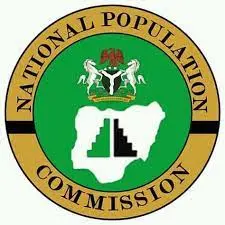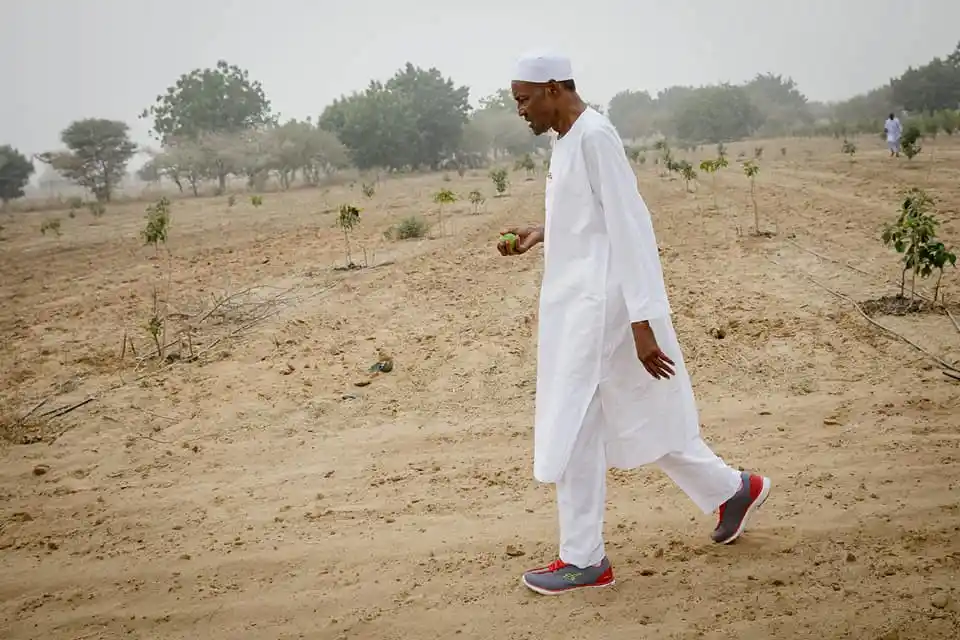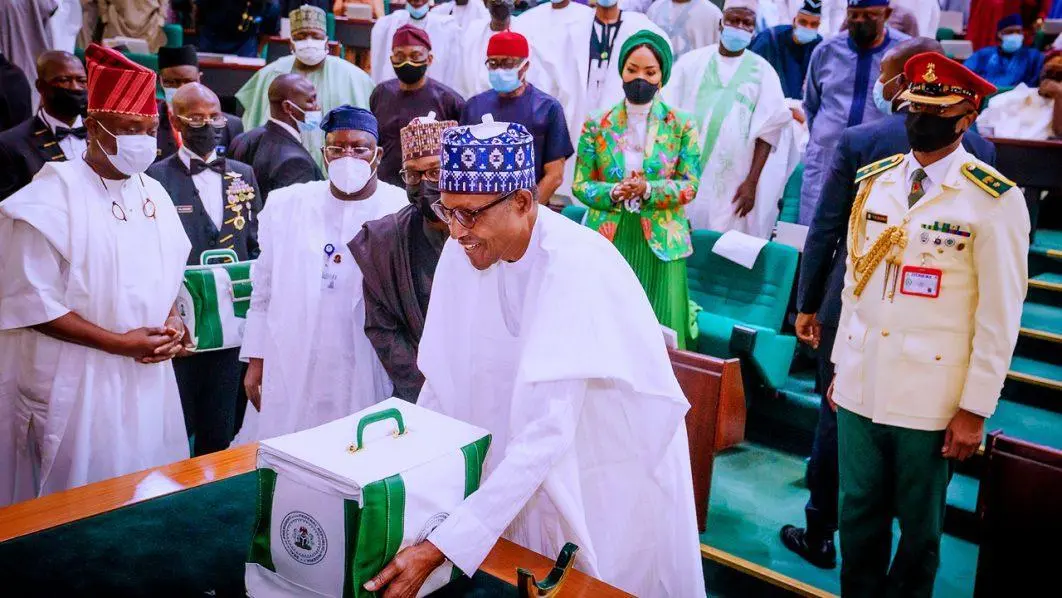“I’ll allow Nigerians to say it. I hope they’ll be fair to me. I want them to analyze how things were when we came in and how they are when we’re leaving.”
In his first interview of 2022, President Buhari responded that Nigerians would decide his legacy to the country after leaving office. When asked about his legacy to the country, like a hopeful student after sitting for an examination, he said
“I’ll allow Nigerians to say it. I hope they’ll be fair to me. I want them to analyze how things were when we came in and how they are when we’re leaving.”
Well, since the President asked for a report card, let us give him one.
How has the Buhari-led administration performed on key indicators of socio-economic development, as he counts down the seventeen months left on his tenure and his departure from office?
Robust Social Humanitarian Service
The Buhari-led administration set up humanitarian and social welfare programs designed to cut across different categories of beneficiaries. The introduction of N-Power, the National Cash Transfer Program (NCCP), and the National Home-Grown School Feeding Program, the latter two being the first of its kind, impacted the lives of Nigerians to varying degrees.
The N-Power program, designed to boost manpower in critical sectors such as education and agriculture, as well as reduce the country’s unemployment burden has empowered youths across the country. In 2018, 498,574 Nigerian youths were enrolled in the program.
The National Cash Transfer Program (NCCP), designed to deliver timely and accessible conditional cash transfers (CCT) to beneficiary households and build their capacity for sustainable livelihoods, reached 1,698,714 beneficiaries between 2018 and 2020. The programme is funded from three major sources; Federal Government, Credit World Bank, and the $322.5m recovered Abacha fund. In 2018, there were 268,568 beneficiaries, the number then increased to 645,970 in 2019 and then 784,176 beneficiaries in 2020.
The National Home-Grown School Feeding Program, which operates in 24 states, has seen millions of children fed daily in primary schools. In 2017, 2.8 million children benefited from this program. The number of children increased to 6.8 million in 2018, then 9.3 million in 2019. The number of children, however, declined to 9.04 million in 2020, perhaps due to Covid19 lockdowns.
Revamping the Railways, 712km Delivered
The President since assuming office has provided 712km rail lines in four railway projects. They are the Abuja Metro of about 37km, the 186km Abuja-Kaduna railway, the Ajaokuta-Itakpe-Warri 326km railway project, and lastly the Lagos-Ibadan project of 156km, with an extension of another 7km.
These projects have no doubt boosted the country’s infrastructure, connecting cities with a safe and reliable means of transportation.
Exchange Rates? Higher Exchange Rates, Weaker Naira
Nigeria’s exchange rate has always experienced ebb and flow and its currency has seesawed to the rhythm of economic outlooks.
However since the Buhari-led administration assumed office, Nigeria’s exchange rate for major currencies has continued to climb higher with its currency going in the opposite direction.
The US Dollars increased from N169.50 to a dollar in April 2015 to N414.29 in January 2022, a 144.42% increase in the exchange rate of naira to the dollar during this administration.
Other currencies also experienced increases above 97%. The Pound Sterling increased by 97.52%. It was N287.87 to a pound in April 2015, and as of January 2022, it is N568.61.
The EURO increased by 127.54% and the YEN by126.25%.
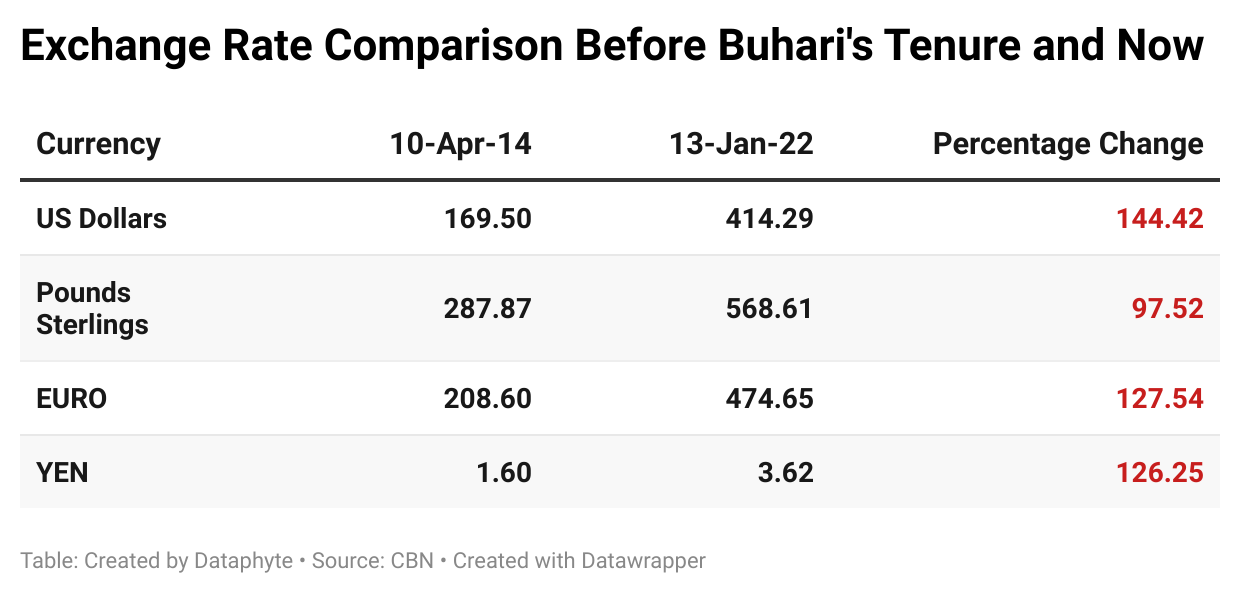 Nigeria’s exchange rate before and during President Buhari’s Administration
Nigeria’s exchange rate before and during President Buhari’s Administration
Inflation Digits? Not Single Anymore
Nigeria’s inflation rates were all in single digits across all headings before the commencement of the Buhari administration.
After the take-over of economic affairs, the inflationary trend rose across all headings throughout 2017. After that, it experienced a drop before an increase from 2019.
However, even in the drop period, inflationary figures were in double digits as they are yet to get to the single digits of the pre-Buhari era.
 Nigeria’s inflation trend before and during President Buhari’s Administration
Nigeria’s inflation trend before and during President Buhari’s Administration
Headline inflation moved from 8.75% in April 2015 to 15.4% in November 2021. Food inflation moved from 9,5% to 17.21% in the same period, and core inflation from 7.7% to 13.85%.
Where are the Jobs? Unemployment Rates up by 25.74%
By the end of 2020, unemployment rates in Nigeria had increased by 25.74% from when Muhammadu Buhari came into power. By the end of the second quarter of 2015, Nigeria had an unemployment rate of 7.45%. From that point on it has increased steadily and at the end of 2020, the country’s unemployment rate closed at 33.28%.
Also related to unemployment is underemployment which also increased by 6.22%. The underemployment rate increased from 16.63% in Q1 2015 to 22.84% by the end of Q4 2020.
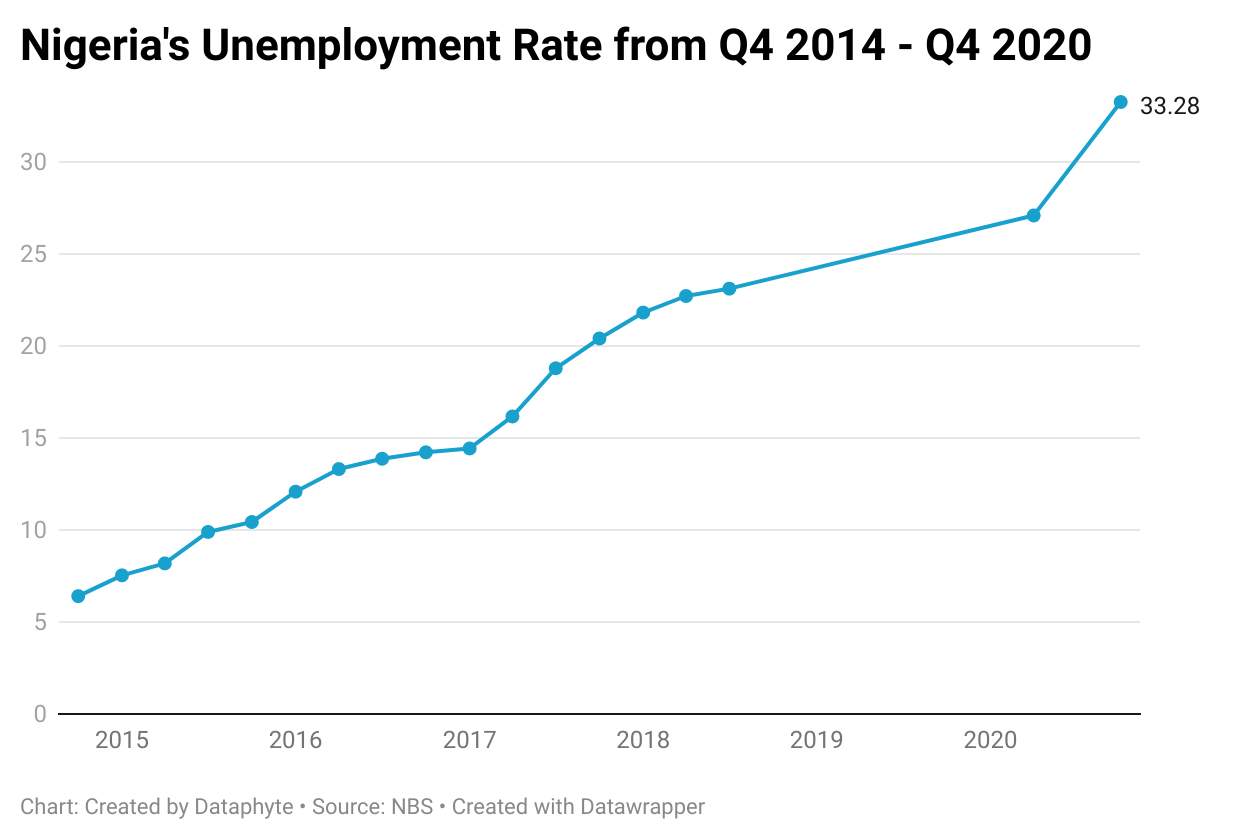 Nigeria’s unemployment rate before and during President Buhari’s Administration
Nigeria’s unemployment rate before and during President Buhari’s Administration
Security or more Aptly Insecurity? Killings increased by 248.03% and Kidnappings by 361.19%
Before May 2015, Nigeria was facing insurgency, with Boko Haram being a significant threat to peace. The group was directly responsible for the killings of at least 11,100 people between July 2009 to 2014, displacing thousands of persons.
However, despite President Buhari’s promise in his campaign, pledging to defeat Boko Haram in three months, it has been six years and seven months and rather than defeating Boko Haram, other forces such as bandits, kidnappers, unknown gunmen, have joined up with the Boko haram threat, further heightening insecurity in the country.
From May 2015 to 2019, at least 25,794 people were killed in various attacks. These deaths resulted from all threats to peace in the country ranging from Boko Haram to bandits. In 2020, at least 4,556 people were killed from various violent clashes across the country. The number increased to 8,281 within the first three quarters of 2021.
This brings the total number of killings from May 2015 to the third quarter of 2021 to an estimated 38,631 people, an increase in killings by 248.03% compared to the figure from between 2009 to 2014.
While kidnapping is not new and was largely associated with the Niger Delta militants in the early days of the country’s 4th Republic, it has become a bigger plague than ever before. Bandits and terrorists alike have now adopted kidnapping as a strategy for terrorizing citizens.
Between 2009 and 2015, there was just one case of kidnapping reported in colossal numbers – the Chibok girls. The incident saw a total number of 276 schoolgirls kidnapped by the Boko Haram group.
However, there have been at least 1,010 reported cases of school children kidnapped from 2018 to 2021. This gives a 361.19% increase in kidnapping during the Buhari regime.
.png) Number of School Children Kidnapped in Nigeria (2018 to 2021)
Number of School Children Kidnapped in Nigeria (2018 to 2021)
Poverty Line? At Least 3 Nigerians Fall Below it Every Minute.
At least 3.3 persons fall below the poverty line every minute in Nigeria. The percentage of persons living below the poverty line of $1.90 per day increased from 38% in 2016 to 41% in 2022.
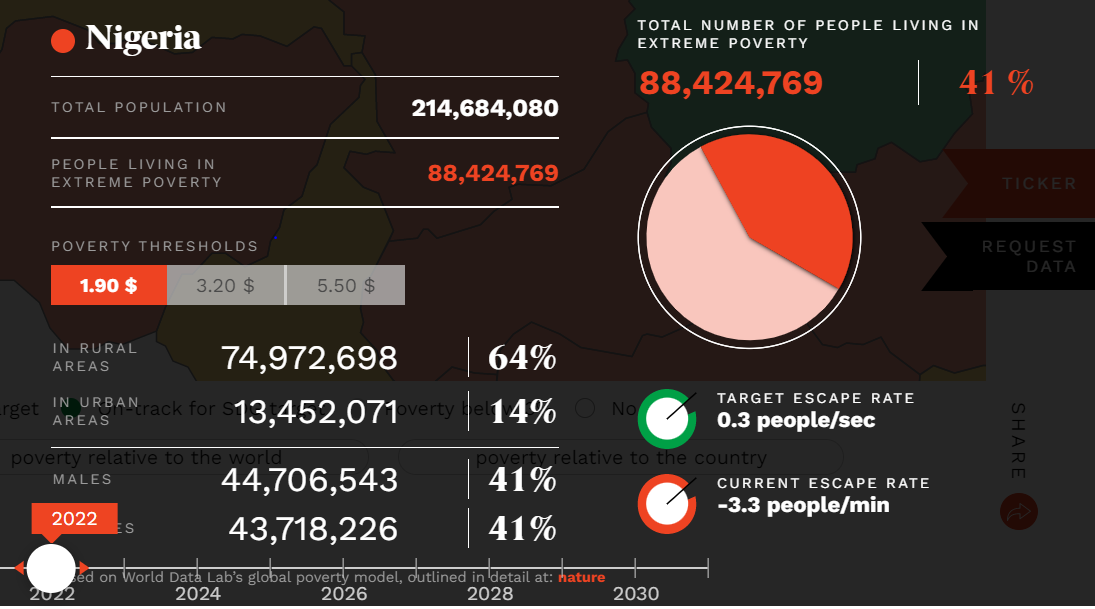 Source: https://worldpoverty.io/map
Source: https://worldpoverty.io/map
Those living below the poverty line have continued to increase in rural and urban areas during the Buhari regime. In 2016, 56% of the population in the rural area and 7% in the urban area were living below the poverty line. By 2022, the percentage increased to 64% in rural areas and 14% in urban areas.
National Debt Increased by 215.07%
President Buhari has overseen Nigeria’s debt profile increased by 215.07%. He was handed a public debt to the tune of N12.06 trillion by the end of March 2015. However, as of September 2021, the country’s debt profile has increased to N38.004 trillion.
With a continuously increasing budgeting deficit, there exists a premonition of the country’s debt increasing beyond this figure by the end of his tenure.
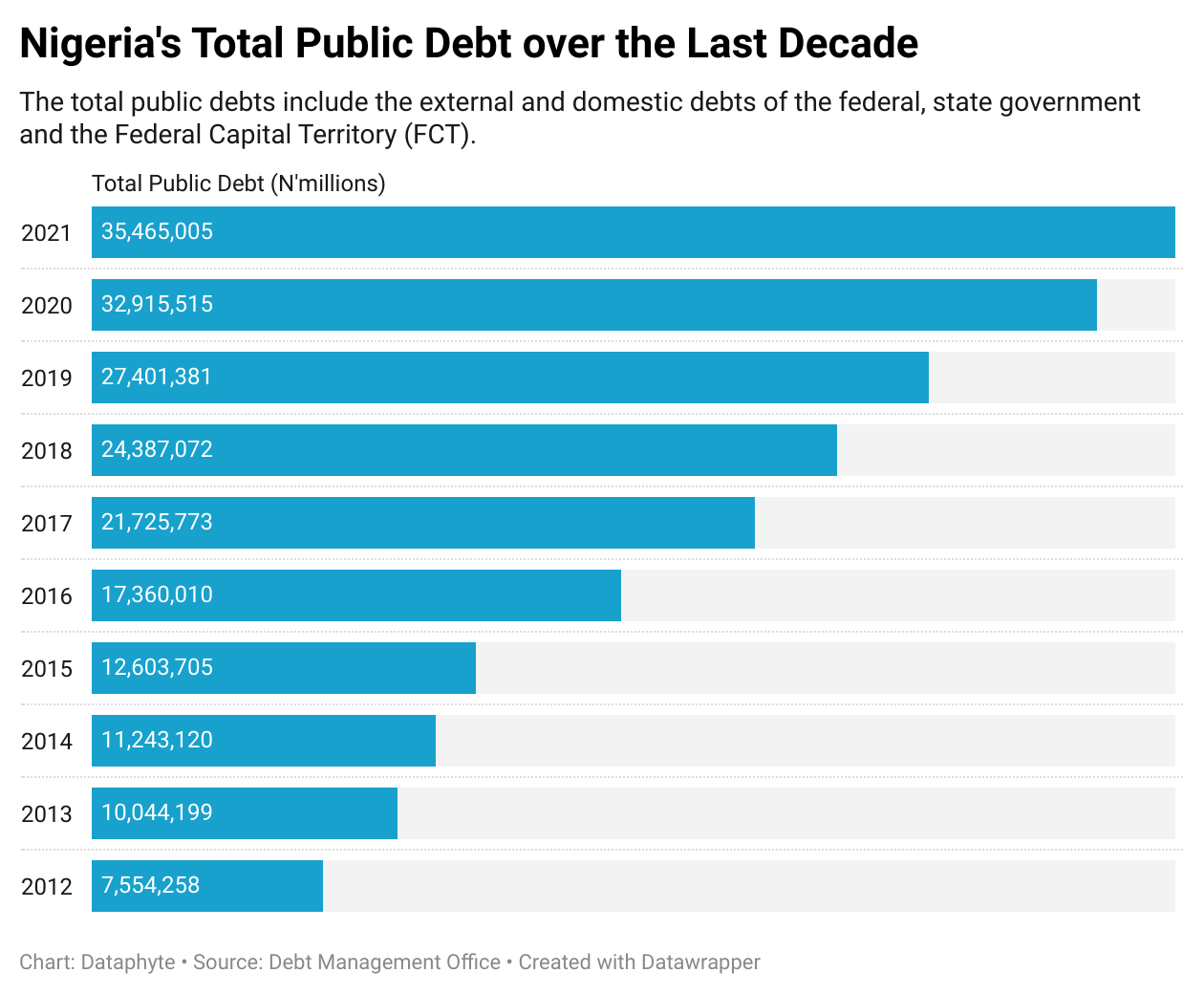 Nigeria’s Total Public Debt Profile over the last decade
Nigeria’s Total Public Debt Profile over the last decade

.webp)

 Nigeria’s exchange rate before and during President Buhari’s Administration
Nigeria’s exchange rate before and during President Buhari’s Administration Nigeria’s inflation trend before and during President Buhari’s Administration
Nigeria’s inflation trend before and during President Buhari’s Administration Nigeria’s unemployment rate before and during President Buhari’s Administration
Nigeria’s unemployment rate before and during President Buhari’s Administration.png) Number of School Children Kidnapped in Nigeria (2018 to 2021)
Number of School Children Kidnapped in Nigeria (2018 to 2021) Source:
Source:  Nigeria’s Total Public Debt Profile over the last decade
Nigeria’s Total Public Debt Profile over the last decade